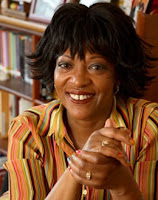"what'sa matter with poeia?"
"Oh no matta'!"
That was a really bad joke. But, also an introduction to the first book I want to review:
Directly from dictionary.com:
on·o·mat·o·poe·ia [on-uh-mat-uh-pee-uh, ‐mah-tuh‐]
That was a really bad joke. But, also an introduction to the first book I want to review:
Directly from dictionary.com:
on·o·mat·o·poe·ia [on-uh-mat-uh-pee-uh, ‐mah-tuh‐]
Noun
1. the formation of a word, as cuckoo, meow, honk, or boom, by imitation of a sound made by or associated with its referent.
2. a word so formed.
3. the use of imitative and naturally suggestive words for rhetorical, dramatic, or poetic effect.
1. Red Sled, by L. Judge is an onomatopeia book; a book written only with words which imitate the sounds of the action in the story. As you guessed it by the title, the story revolves around a red sled. When done well I think onomatopeia books are great because they allow the children to be the story teller. Red Sled is full of very cute pictures; simple to describe action; loveable and identifiable animals. I think this would be fun with Pre-school and Kindergarten.
For wordless books check out this list. For more onomatopeia books check this list.
2. I knew that I was going to like, A House in the Woods, by Inga Moore, as soon as I read the book's dedication, which begins with, "This book is dedicated to Beavers, who are the fastest and the best builders in the world..." Ms. Moore's pictures are wonderful, her characters so animated and at times laughably human-like. I loved the story because it involves friendship and cooperation and problem solving, but in a non-hokey way. The story also made me envious of a new house full of friends and a peanut butter sandwich bill left by the builders! Because of the amount of words I would say this would be best with K-2/3 depending on the group.
3. Will Moses, great grandson of the famous artist Grandma Moses, recently published, Mary and Her Little Lamb: the true story of the famous nursery rhyme. As I find I am drawn to the detailed, folk art style art work that Grandma Moses was famous for, so too I found that I enjoyed that in Will Moses' book, but the story was a little too wordy and boring at times. Unfortunately this book falls into that trap of being a "longer picture book," which will often sit on the shelves because most librarians/teachers/parents know that kids won't sit through a storytime with a book this long, and the older crowd of kids who would be perfect for this type of book have usually moved on to shorter juvenile fiction. So, in short, great example of folk art; gives some useful background info at the end about the real Mary; too long. Age: 3rd grade?
4. I liked the idea behind, Tom Lichtenheld and Ezra Fields-Meyer's E-Mergency!, but the book fell short. The alphabet lives together and upon the letter E's injury it is decided that "E" can only heal properly if everyone stops using the letter E in all words. Maybe sturdier 2nd/3rd grade readers will enjoy deciphering the books nonsensical words, but as a Librarian all I kept thinking was, "how the hell would I be able to read this in a storytime?!" There are too many side bubbles and comments on each page, this paired with the nonsensical words drove me nuts.
For wordless books check out this list. For more onomatopeia books check this list.
2. I knew that I was going to like, A House in the Woods, by Inga Moore, as soon as I read the book's dedication, which begins with, "This book is dedicated to Beavers, who are the fastest and the best builders in the world..." Ms. Moore's pictures are wonderful, her characters so animated and at times laughably human-like. I loved the story because it involves friendship and cooperation and problem solving, but in a non-hokey way. The story also made me envious of a new house full of friends and a peanut butter sandwich bill left by the builders! Because of the amount of words I would say this would be best with K-2/3 depending on the group.
3. Will Moses, great grandson of the famous artist Grandma Moses, recently published, Mary and Her Little Lamb: the true story of the famous nursery rhyme. As I find I am drawn to the detailed, folk art style art work that Grandma Moses was famous for, so too I found that I enjoyed that in Will Moses' book, but the story was a little too wordy and boring at times. Unfortunately this book falls into that trap of being a "longer picture book," which will often sit on the shelves because most librarians/teachers/parents know that kids won't sit through a storytime with a book this long, and the older crowd of kids who would be perfect for this type of book have usually moved on to shorter juvenile fiction. So, in short, great example of folk art; gives some useful background info at the end about the real Mary; too long. Age: 3rd grade?
4. I liked the idea behind, Tom Lichtenheld and Ezra Fields-Meyer's E-Mergency!, but the book fell short. The alphabet lives together and upon the letter E's injury it is decided that "E" can only heal properly if everyone stops using the letter E in all words. Maybe sturdier 2nd/3rd grade readers will enjoy deciphering the books nonsensical words, but as a Librarian all I kept thinking was, "how the hell would I be able to read this in a storytime?!" There are too many side bubbles and comments on each page, this paired with the nonsensical words drove me nuts.
 əˌmæt
əˌmæt



Comments